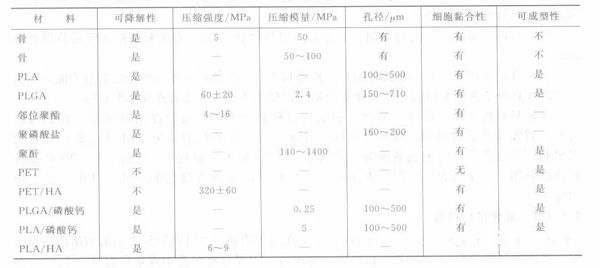Introduction to Polymer Materials for Organ and Tissue Replacement
Skin, muscles, ligaments, cartilage, and blood vessels are all soft tissues, mainly composed of collagen. Collagen is the main component of connective tissue in mammals, making up about 30% of the body's proteins, with a total of 16 types, the most abundant being type I collagen. Type I collagen is found in tendons and ligaments, while type II collagen is present in hyaline cartilage. Both type I and type II collagens form interwoven fiber networks that connect tissues in the body. The molecular structure of collagen consists of three helical polypeptide chains, each containing 1050 amino acids. Bones and teeth are hard tissues.
Bone is composed of 40% organic material and 60% inorganic materials such as calcium phosphate and calcium carbonate. Among the organic materials, 90% to 96% is collagen, and the rest are minerals such as calcium phosphate and hydroxyapatite [Ca10(PO4)6(OH)2]. All tissue structures are exceptionally complex. The use of polymer materials as substitutes for soft and hard tissues is an important task in tissue engineering. Factors that need to be considered from a material perspective for polymers used in tissue or organ replacement include mechanical properties, surface properties, porosity, degradation rate, and processability. Factors that need to be considered from a biological and medical perspective include bioactivity and biocompatibility, how to connect with blood vessels, nutrition, growth factors, cell adhesion, and immunogenicity.
In the repair and regeneration of soft tissues, woven polyester fiber tubes are commonly used as artificial blood vessel (diameter > 6mm) materials, while block polyurethane is used when the diameter < 4mm. The preparation process of artificial skin involves seeding human fibroblasts on a nylon mesh laid over a thin silicone rubber membrane, where the nylon mesh serves as a three-dimensional scaffold and the silicone rubber membrane maintains the supply of nutrient solution.
As the cells grow, they release proteins and growth factors, forming skin tissue. Cartilage is composed solely of chondrocytes, lacks blood vessels, and is difficult to repair once damaged. Polyethylene oxide can be made into a gel for use as artificial cartilage.
Bone is a dense hard tissue with special connectivity, composed of type I collagen and calcium phosphate in the form of hydroxyapatite. Bone includes the outer layer of long diaphyseal bone and the inner layer filled with cancellous bone. Long diaphyseal bones have very high mechanical properties, and artificial long diaphyseal bones need to be prepared using composite materials with continuous fibers. In addition to the requirements of biocompatibility (supporting cell adhesion and growth and being biodegradable), artificial cancellous bone also needs to have mechanical properties similar to those of natural cancellous bone (compressive strength 5MPa, compressive modulus 50MPa).
Neural cells cannot divide but can be repaired. The two ends of the damaged nerve can be repaired with an artificial nerve conduit made of polymer materials. Many cells and devices controlling neurotrophic factors are implanted inside the conduit for use in artificial nerves. Charge has a promoting function in neural cell repair, and artificial nerve conduits made of electret polyvinylidene fluoride and piezoelectric polytetrafluoroethylene also have a promoting function in cell repair, but they are non-biodegradable polymer materials and cannot be implanted in the body for a long time.
performance of artificial cancellous bone

polymer materials for artificial nerve conduits

【Copyright and Disclaimer】The above information is collected and organized by PlastMatch. The copyright belongs to the original author. This article is reprinted for the purpose of providing more information, and it does not imply that PlastMatch endorses the views expressed in the article or guarantees its accuracy. If there are any errors in the source attribution or if your legitimate rights have been infringed, please contact us, and we will promptly correct or remove the content. If other media, websites, or individuals use the aforementioned content, they must clearly indicate the original source and origin of the work and assume legal responsibility on their own.
Most Popular
-

Dow, Wanhua, Huntsman Intensively Raise Prices! Who Controls the Global MDI Prices?
-

Clariant Unveils Cost-Cutting Plan Details, Plans to Shut Down Multiple Plants
-

[Today's Plastics Market] General Materials Weakly Fluctuate, Engineering Materials Steadily Rise
-

New Breakthrough in Domestic Adiponitrile! Observing the Rise of China's Nylon Industry Chain from Tianchen Qixiang's Production
-

Daily Review: Polyethylene Prices Under Weak Consolidation, Sellers Face Significant Pressure to Move Inventory






